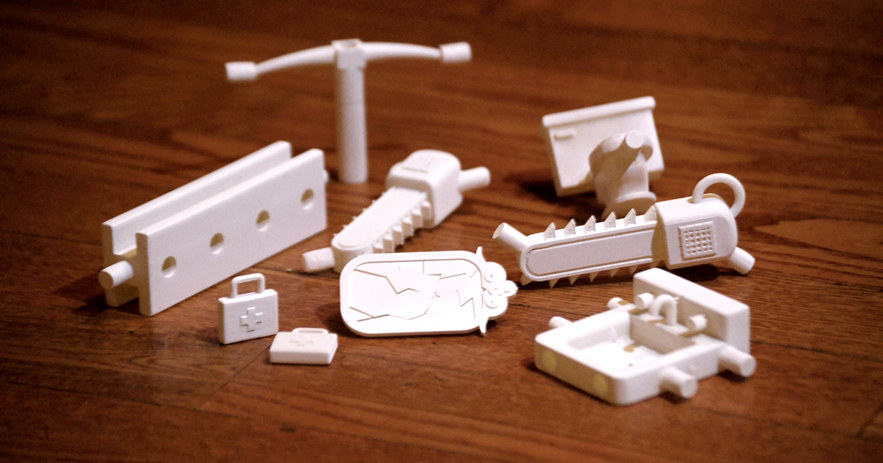Project at Purdue University
Introduction:
Aporkalypse is a toy that relies heavily on the player using their imagination, while simultaneously challenging their building/constructive skills. The goal of this toy is that the player has to build a tower using the provided pieces. This tower has to be designed in such a way that it survives multiple earthquake-like motions. The toy also has a very strong story background that is discussed later in this report. The generation of the concept, concept design and functioning of the toy are also discussed.
Concept Design, Fabrication and Assembly:
The design for the toy is divided in two parts. The first part consists of the building pieces, and the second part is the base. The building pieces are of various shapes and sizes. Using these unique pieces, the player has to build a structure/tower. In order to challenge the player, the base on which the tower is made has a rocking mechanism which simulates an earthquake or a horde of zombie pigs shaking the structure. The players’ objective is to construct a tower sturdy enough to withstand these vibrations, and ultimately survive the aporkalypse.
To simulate the earthquake, a circuit in conjunction with an arduino was designed, coded, and built. This circuit includes 4 solenoids that are connected to 4 mosfets. The solenoids and the arduino are connected in parallel and are powered by two 9 volt batteries. Every time the shake button is pushed, the Arduino sends signals to random solenoids at random times to simulate an earthquake.
The building pieces were designed using Creo Parametric. Some of these pieces resemble real life objects like a toilet seat, a chainsaw, a sink, etc (see below images). Other pieces are abstract shapes that help in constructing a tower or connecting multiple pieces together. After these pieces were designed they were converted to STL files and were combined together in the Lightyear software. See below images for the lightyear assembly of all the building pieces. This combined file was 3D printed from SLA material. After the 3D printing process, these parts were sanded so that the coat of primer paint could stick. Finally, coats of paint and polish were applied to the pieces to give them the marketable finished look.
The base was also designed in Creo Parametric. Then the base and top circular part were hand machined using recycled plastic and wood. To complete the assembly of the base, the arduino and the circuit were attached to the bottom surface of the base and the four solenoids were screwed on to the corners of the base. See below images for the final assembly of the toy.

